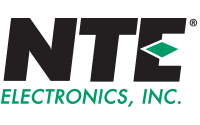
NTE Electronics, Inc.
NTE Electronics, Inc. is a prominent manufacturer and supplier of electronic components and accessories. With a history spanning over 40 years, the company has established itself as a trusted provider of high-quality products in the electronics industry. NTE offers a comprehensive range of electronic components, including semiconductors, resistors, capacitors, switches, relays, connectors, and more. These components are widely used in various applications, such as automotive, industrial, consumer electronics, and telecommunications. NTE focuses on delivering reliable and innovative solutions to meet the evolving needs of its customers. The company's commitment to quality is evident through its rigorous testing procedures and compliance with industry standards. NTE also offers value-added services like custom manufacturing, engineering support, and inventory management solutions to assist customers in optimizing their supply chain. With a global distribution network, NTE ensures efficient and timely delivery of its products worldwide. Overall, NTE Electronics, Inc. is recognized for its extensive product portfolio, exceptional quality, and customer-centric approach, making it a preferred choice for electronic components among professionals and hobbyists alike.
Photoelectric, Industrial
Results:
Results remaining:0
Applied Filters:
NTE Electronics, Inc.
No data |
About Photoelectric, Industrial
Industrial photoelectric sensors are devices used to detect the presence, absence, or distance of objects in industrial applications. These sensors employ fixed wavelengths of light to transmit signals and utilize their receivers to detect changes in the transmitted light. They are designed to ignore ambient light and provide reliable detection in challenging industrial environments.
These sensors are housed in rugged cases, making them suitable for use in harsh industrial conditions. They come in various sensing methods, each tailored to specific application requirements.
Cross-beam sensors: Consist of separate transmitter and receiver units that create a beam perpendicular to the path of the object being detected. The interruption of the beam triggers the sensor.
Through-beam sensors: Comprise a separate transmitter and receiver unit placed opposite each other. An object passing between them interrupts the transmitted beam, triggering the sensor.
Diffused sensors: The transmitter and receiver are housed together in a single unit. The sensor detects the reflected light from an object within its sensing range.
Reflective sensors: Utilize a reflective surface to direct the transmitted light back to the receiver. The detection occurs when the reflected light is interrupted by the presence or absence of an object.
Retroreflective sensors: Deploy a special reflector to bounce the transmitted light back to the receiver. The sensor detects changes in the reflected light caused by an object entering or leaving the sensing zone.
Transmissive sensors: Consist of a separate transmitter and receiver unit placed opposite each other, with the object being detected passing through the gap between them. The interruption of the transmitted beam triggers the sensor.
Proximity sensors: Designed to detect objects in close proximity without physical contact. They utilize various technologies, such as capacitive, inductive, or magnetic fields, to sense the presence of objects.
Distance sensors: Enable precise distance measurement by utilizing techniques like time-of-flight or triangulation. These sensors are commonly used in automated industrial processes.
Line focus sensors: Generate a narrow beam of light, allowing for precise detection of objects within a specific line or path.
In addition to the sensing methods, industrial photoelectric sensors are differentiated by factors such as light source color and wavelength, sensing distance, ingress protection (IP) rating indicating resistance to dust and moisture, and output configuration.
Overall, industrial photoelectric sensors play a vital role in industrial automation, enabling reliable and accurate object detection. They are designed to withstand harsh environments and are available in various configurations to meet different application needs.
